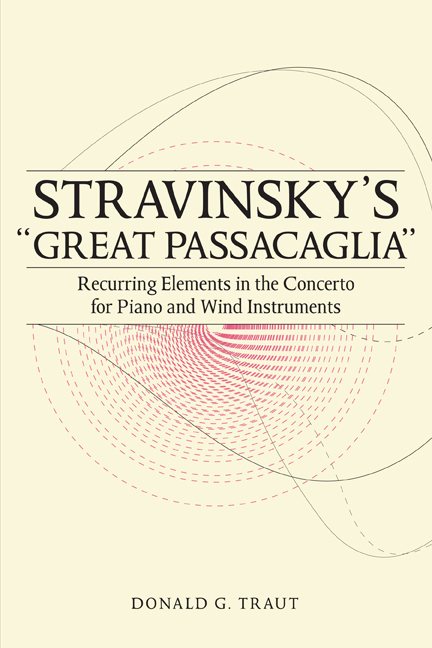Book contents
- Frontmatter
- Dedication
- Contents
- Acknowledgments
- Introduction
- 1 Context and Composition
- 2 Concerto as Catalyst
- 3 Analytical Tools and Recurring Elements
- 4 Counterpoint and Tonality in the First Movement
- 5 Tetrachords and Tritones in the Largo
- 6 Points of Imitation in the Finale
- Conclusion
- Appendix
- Notes
- Bibliography
- Index
4 - Counterpoint and Tonality in the First Movement
Published online by Cambridge University Press: 12 August 2020
- Frontmatter
- Dedication
- Contents
- Acknowledgments
- Introduction
- 1 Context and Composition
- 2 Concerto as Catalyst
- 3 Analytical Tools and Recurring Elements
- 4 Counterpoint and Tonality in the First Movement
- 5 Tetrachords and Tritones in the Largo
- 6 Points of Imitation in the Finale
- Conclusion
- Appendix
- Notes
- Bibliography
- Index
Summary
The opening movement of the Concerto, like that of most major compositions, is simultaneously representative and definitive. The treatment of pitch and rhythm is representative not only of what is to come in the subsequent movements, but also of Stravinsky's larger neoclassic direction. For this piece, it is the definitive movement. It is the longest and most complex, and it took the longest to compose, as we learned in chapter 1. It is home to most of the famous passages associated with the piece, including the slow introduction with its dotted rhythms, the vigorous opening of the Allegro, the oft-cited solo passage, and the syncopated cadenza. It is also the primary focus of attention for most scholars. And as we learned in the previous chapter, its opening measures provide a nice framework for more extensive analysis.
Deciding how best to delve into this most substantial movement is not an easy task. The mix of strongly related material with jarring transitions to new content can be bewildering. One could do worse than simply to begin with the introduction and proceed chronologically, highlighting relationships to previous material each step of the way. But for our purposes, several reasons make the solo passage at measure 70 an attractive point of departure. First, it was clearly a focal point for Stravinsky as he wrote the piece. It is also the most developed statement of the “calendar tune” in the entire piece, and his numerous detailed revisions to his summary draft suggest that he “tweaked” it well into the compositional process. Second, primarily because of Schenker's analysis, it has been a focal point for scholars. Finally, close study of this passage, where Stravinsky's contrapuntal practice is on display, reveals several connections to other portions of the piece. For these reasons and more, the first part of this chapter branches out from the solo passage to the rest of the opening sections, including the introduction and the start of the Allegro. From there, a section covering the developmental material and the cadenza documents these areas of contrast. Finally, we take a step back and view the movement's long-range tonal motion, revealing a motivic parallelism that connects local and global events.
- Type
- Chapter
- Information
- Stravinsky s "Great Passacaglia"Recurring Elements in the Concerto for Piano and Wind Instruments, pp. 67 - 94Publisher: Boydell & BrewerPrint publication year: 2016



